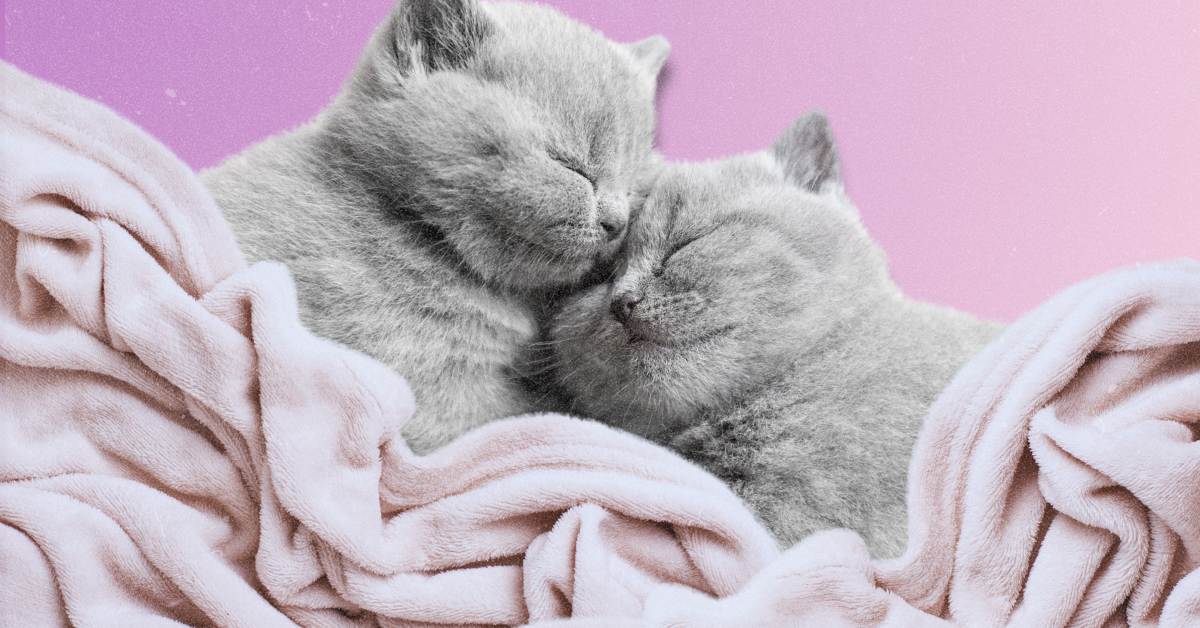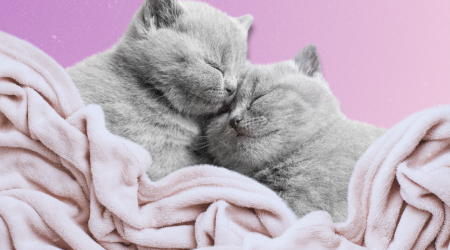
You swear you sleep better when you drift off in your partner’s arms, while your sweetheart says spooning is more stress than it’s worth. The heat. The accidental kicks. That you’re-smothering-me feeling. So who’s right? Does cuddling help or harm your sleep?
There is not a lot of scientific research on the subject. But the data that do exist come out in support of snuggles. “The perception is that it is a form of bonding, and there’s actually good empirical support for the idea that cuddling could be good for sleep,” says Wendy Troxel, a senior behavioral scientist at the RAND Corporation and author of Sharing the Covers: Every Couple’s Guide to Better Sleep.
[time-brightcove not-tgx=”true”]Here’s how cuddling might help you get better sleep.
It may make you calmer
Research has shown that forms of body-to-body contact like hugging can be stress-relieving, and the same applies to bedtime snuggling. “It can produce a feeling of calm and even have physiological effects, including lowering blood pressure and essentially lowering that ‘fight or flight’ or sympathetic nervous-system response,” says Troxel.
She says that such a calming response before bedtime—“particularly with somebody with whom you have a good quality relationship”—can promote feelings of safety, security, and relaxation, which could be beneficial for sleep.
Dr. Simran Malhotra, an internal medicine and lifestyle medicine physician in Bethesda, Md., says that for married couples, snuggling has been shown to boost relationship satisfaction more than just spending time together does. “It also enhances sleep quality by promoting feelings of safety and security, especially for women,” she adds.
The oxytocin effect
Another reason that snuggling may be a boon for sleep relates to what scientists know about oxytocin, sometimes aptly called the “cuddle hormone” or “love hormone.”
Research shows that snuggling increases feelings of comfort, relaxation, and intimacy, while boosting positive emotions. All of these benefit sleep quality and overall well-being. These feelings come from oxytocin, which is released through various forms of touch, says Malhotra, and is known to reduce anxiety, depression, and stress by lowering cortisol levels, which can have a negative impact on sleep quality.
Different types of touch that don’t just involve sex—cuddling, hugging, or even holding hands—can generate this hormone and an “anti-stress response” along with it, says Troxel.
Snuggling can enhance your sleep routine
“Routines in general are good for sleep,” says Troxel—and that includes the five or 10 minutes you spend spooning each night. Historically, sleep has always been a communal behavior, so a tilt toward solo sleep is only relatively recent. Historian A. Roger Ekirch wrote in his book At Day’s Close: Night in Times Past that nighttime was “man’s first necessary evil” and caused a lot of fear, particularly in pre-industrial societies before artificial light was invented. Ekrich posited that sharing a bed offered a sense of security and physical warmth that was critical to ward off real and imagined threats at night. Even now, sleep remains a vulnerable state, Troxel says, and we as humans tend to derive a sense of security via our connections with others. “That’s why it is important to take a close look at how our nighttime routines have changed—in many cases, they are absent all together, and often they are solitary instead of social,” says Troxel. Saying no to snuggling is a missed opportunity for social connection in an increasingly socially isolated world.
Everyone is aware that using technology before bed is detrimental for sleep, but one little-known reason why is that it’s a solitary activity, says Troxel. In the distant past, the options for pre-sleep activities were limited and often social in nature, such as gathering around the fire. Now, smartphones and tablets rule the night.
“There is even a term for this called ‘technoference,’ which refers to the increasingly common phenomenon where the use of technological devices interferes with face-to-face (or skin-to-skin) interactions, including cuddling,” she says.
Read More: 6 Health Myths About Oils
Having some physical contact and an opportunity to enhance your relational bond prior to sleep, by contrast, “can be very beneficial to cue the brain, ‘OK, now it’s time for settling and unwinding,’” says Troxel.
Take the example of Saša Malek, a technical documentation specialist based in Munich. She wears an Oura, a smart ring that tracks fitness and sleep. “I realized what really helps me before bed is certain types of body closeness, like cuddling—emotional embodied closeness between me and my partner,” says Malek. When she cuddles, she falls asleep more quickly and gets more REM sleep. “It’s really about allowing your body to relax.”
“When I’m not having sufficient REM sleep, I have trouble. I’m cranky, and my psychology doesn’t adapt well,” she says, so when she figured out this pattern with her Oura data, she started to prioritize cuddling.
Pets can be good snuggle partners, too. The fitness-tracker brand WHOOP found in 2022 that sharing a bed with their dog or cat helped people feel more rested and recovered the next day, and helped them sleep a few extra minutes. Despite these potential perks of tucking in with a four-legged friend, research is mixed on whether cuddling with pets in your bed helps or hurts sleep quality; more is needed.
When is the best time to snuggle?
Studies suggest that many couples cuddle before bedtime, and then when it’s time for sleep, they go their separate ways, says Troxel.
Dr. Dylan Petkus, founder of Optimal Circadian Health in Tallahassee, Fla., says that some research shows that touching, hugging, massaging, and being intimate with a partner during sleep onset generally has a positive impact on sleep quality. But cuddling can also negatively affect sleep if it goes on for too long, he points out.
That same study indicates that there’s a specific threshold of nighttime physical contact for people which can deteriorate sleep quality. “This was highly individual,” says Petkus. “Everybody has a certain snuggle requirement that can improve sleep. If you go over that, it can lead to sleep disruptions.”
Whether cuddling negatively or positively impacts your sleep depends on the person and also how sleep is measured. “Many people may feel like they sleep better after cuddling, but that doesn’t necessarily manifest in objective measures of sleep,” says Troxel. What’s soothing and enjoyable for one person can be a sleep disruptor for someone else—particularly for those with a history of trauma.
Read More: The 1 Heart-Health Habit You Should Start When You’re Young
Being too close can cause discomfort, overheating, or limited movement, which can wake someone up when they are trying to sleep, says Shelby Harris, director of sleep health at Sleepopolis, an independent sleep and mattress review website. Plus, if one partner moves a lot, it can disturb the other, leading to poor sleep. Those sensitive to temperature or movement may have an especially tough time with falling asleep snuggling, she says.
“It’s not going to be a one-size-fits-all approach,” echoes Troxel.
Cheryl Groskopf, a therapist in Los Angeles, says that cuddling comes up a lot in couples’ sessions, and she often coaches clients through such a wide spectrum of cuddling preference differences. “One partner sees not cuddling as rejection, while the other finds it suffocating,” she says. What’s important in this scenario is to explore each person’s needs and come up with a compromise.
For one couple that Groskopf counseled, this meant implementing a set snuggle time before sleep, then transitioning to separate sleeping positions. She also says using separate comforters or sheets can help regulate temperature, making sleep and even snuggling more comfortable for everyone. “The goal is to find a balance that makes both partners feel valued and comfortable without compromising intimacy,” she says.
What’s the best snuggling position?
A lack of research means it’s hard to single out an ideal position prescription for snuggling. But Harris and Malhotra both mention “spooning” as the most common choice. (This position involves one person lying on their side, and the other person curling up behind them on their side as well). “It allows for close contact while still giving room to move and breathe,” says Harris.
If spooning isn’t for you, you can still get the health and relationship benefits through various forms of touch like hugs, hand-holding, gentle stroking and massage, says Malhotra. It’s true from birth: “During the newborn period, skin-to-skin contact, a form of snuggling, has been shown to significantly improve infants’ sleep quality,” she says.
Since the limited research doesn’t help to provide any guidelines on how to snuggle to reap the most benefits, experts agree you should do what feels best for you and your partner. That could be, say, cuddling in the nook of your spouse’s shoulder or squeezing hands for a few seconds to feel some closeness.
Perhaps most relevant for couples in this modern age is how solitary we’re making the experience of sharing a bed when it doesn’t have to be, and wasn’t for our ancestors, says Troxel. “It’s a sacrifice that couples are inadvertently making, and they’re not even realizing it,” she says. If we ignore that chance to connect “by independently scrolling through our phones or iPads or watching Netflix, we’re really neglecting that very rare opportunity which could be a sacred ritual,” she says.
































